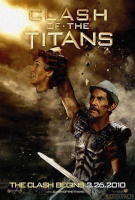El desarrollo de las armas nucleares a lo largo de cincuenta años (en inglés)
2 participantes
Página 1 de 1.
 El desarrollo de las armas nucleares a lo largo de cincuenta años (en inglés)
El desarrollo de las armas nucleares a lo largo de cincuenta años (en inglés)
http://www.businessinsider.com/fifty-years-of-nuclear-development-in-one-chart-2014-6
This One Chart Shows 50 Years Of Nuclear Weapons Development
Armin Rosen
Jun. 20, 2014, 4:27 PM
8,971
3
It's easy to forget that nuclear energy is a fairly recent invention, and that the "age of discovery" of nuclear weapons was a surprisingly brief period. This chart, from a 1998 Department of Defense manual on "Weapons of Mass Destruction Technologies," traces the worldwide spread of nuclear technology from 1942.
[Tienes que estar registrado y conectado para ver esa imagen]
Screen Shot 2014 06 20 at 12.35.06 PMFederation of American Scientists
The top line tracks the development of triggering mechanisms for nuclear reactions. The next line does the same for uranium enrichment technology, while the third follows the progress of plutonium extraction methods.
The larger bottom timeline includes the major events in nuclear weapons development up until 1996. It marks when the declared or suspected nuclear powers other than Russia and the U.S. achieved their capability. In 1996, that meant only five other countries were included on the timeline. It would be only a relatively short time before Pakistan and North Korea tested weapons. (South Africa appears on the timeline, but the country voluntarily destroyed its small nuclear stockpile when the apartheid regime fell in the mid-90s.)
The timeline shows other big developments, like the Cold War arms race, progress in computer processing, and the notorious detonation of the high-yield Castle Bravo thermonuclear device that resulted in massive contamination. And arrows on the far left of the chart indicate the initial steps any would-be nuclear power has to take en route to a weapons capability, like mastering uranium implosion or researching how to optimize a nuclear reaction's yield.
Most interestingly, the chart has a novel method of visualizing the rate of technological progress and conveying just how rapidly humanity entered the nuclear age.
The curve represents the frequency with which American scientists have made new nuclear discoveries. "The distance between the two curves represents the rate of progress," the document explains, "while the area between the curves from 1942 to any arbitrary date gives an estimate of the total knowledge acquired." A flat curve means slow progress and little new knowledge acquired. The curve is practically circular in the 1940s, when the nuclear era kicked off. And by the 1990s, the curve had flatlined — perhaps comfortingly.
But the report warns that nuclear development and broader technological progress aren't as related as they might seem. The curve was at its fattest long before advanced computing technology was widely available. "All five acknowledged nuclear weapons states are shown to have tested their first devices before computer numerically controlled machine tools and four- or five-axis machine tools were generally available," the report says.
If anything, the timeline shows that the barriers to nuclear development aren't technological in nature. Instead, it's a question of domestic political will and the vagaries of international politics. For instance, the curves abruptly narrow because of a late-1950s U.S.-Soviet agreement to halt nuclear testing.
The development of nuclear weapons is a historical watershed. It transformed international politics and gave an existential dimension to relations between the world's great powers. Today, the maintenance and protection of the American nuclear arsenal is a trillion-dollar concern, while an incredible degree of both U.S. and global diplomacy is dedicated to preventing new countries from going nuclear. The mere fact that the human race is capable of wiping itself out within minutes is a recent development in world history, and one that politicians, artists, and thinkers have grappled with for decades.
This chart offers a mixed message for those concerned about nuclear proliferation. The world has the ability to peacefully limit the advancement of nuclear technology. But major leaps forward are possible even under circumstances that would seem primitive by today's technological standards.
And nuclear weapons technology is already out there, with an over 70-year head start on attempts to contain it.
H/t @ScottCarson1957

ivan_077- Staff
-
 Cantidad de envíos : 7771
Cantidad de envíos : 7771
Fecha de inscripción : 14/11/2010
 Re: El desarrollo de las armas nucleares a lo largo de cincuenta años (en inglés)
Re: El desarrollo de las armas nucleares a lo largo de cincuenta años (en inglés)
No pusiste la tabla wey
 Temas similares
Temas similares» ¿Deberian los Estados Unidos temerle a las armas nucleares chinas? (artículo en inglés)
» ¿Desarrollo o amputación? El rol de las industrias extractivas en África (en inglés)
» ¿No te gusta que Israel tenga armas nucleares? Échale la culpa a Nixon
» Reserva mundial de armas nucleares
» "El Ejército de EE.UU. ha perdido varias armas nucleares"
» ¿Desarrollo o amputación? El rol de las industrias extractivas en África (en inglés)
» ¿No te gusta que Israel tenga armas nucleares? Échale la culpa a Nixon
» Reserva mundial de armas nucleares
» "El Ejército de EE.UU. ha perdido varias armas nucleares"
Página 1 de 1.
Permisos de este foro:
No puedes responder a temas en este foro.

 Índice
Índice Últimas imágenes
Últimas imágenes Registrarse
Registrarse Conectarse
Conectarse
